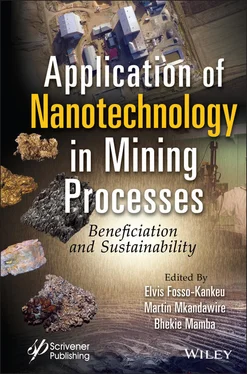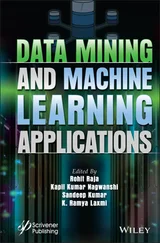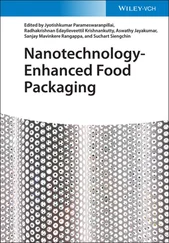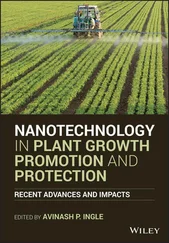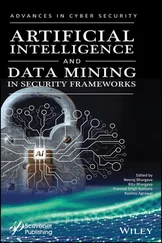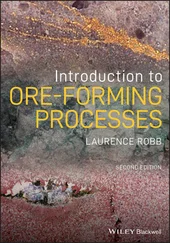Application of Nanotechnology in Mining Processes
Здесь есть возможность читать онлайн «Application of Nanotechnology in Mining Processes» — ознакомительный отрывок электронной книги совершенно бесплатно, а после прочтения отрывка купить полную версию. В некоторых случаях можно слушать аудио, скачать через торрент в формате fb2 и присутствует краткое содержание. Жанр: unrecognised, на английском языке. Описание произведения, (предисловие) а так же отзывы посетителей доступны на портале библиотеки ЛибКат.
- Название:Application of Nanotechnology in Mining Processes
- Автор:
- Жанр:
- Год:неизвестен
- ISBN:нет данных
- Рейтинг книги:5 / 5. Голосов: 1
-
Избранное:Добавить в избранное
- Отзывы:
-
Ваша оценка:
- 100
- 1
- 2
- 3
- 4
- 5
Application of Nanotechnology in Mining Processes: краткое содержание, описание и аннотация
Предлагаем к чтению аннотацию, описание, краткое содержание или предисловие (зависит от того, что написал сам автор книги «Application of Nanotechnology in Mining Processes»). Если вы не нашли необходимую информацию о книге — напишите в комментариях, мы постараемся отыскать её.
Nanotechnology has revolutionized processes in many industries but its application in the mining industry has not been widely discussed. This unique book provides an overview of the successful implementation of nanotechnology in some of the key environmental and beneficiation mining processes.
Audience
Application of Nanotechnology in Mining Processes — читать онлайн ознакомительный отрывок
Ниже представлен текст книги, разбитый по страницам. Система сохранения места последней прочитанной страницы, позволяет с удобством читать онлайн бесплатно книгу «Application of Nanotechnology in Mining Processes», без необходимости каждый раз заново искать на чём Вы остановились. Поставьте закладку, и сможете в любой момент перейти на страницу, на которой закончили чтение.
Интервал:
Закладка:
Table of Contents
1 Cover
2 Title Page
3 Copyright
4 Preface
5 1 Modified Dendrimer Nanoparticles for Effective and Sustainable Recovery of Rare Earth Element from Acid Rock Drainage 1.1 Introduction 1.2 Rare-Earth Element Occurrence in Acid Mine Drainage 1.3 Dendrimer as Extraction Agent of Rare Earth Element in AMD 1.4 Designed a Recovery System for REE from AMD 1.5 Challenges and Opportunities for the Future of Metal Mining 1.6 Conclusion Acknowledgment References
6 2 Cellulose-Based Nanomaterials for Treatment of Acid Mine Drainage-Contaminated Waters 2.1 Introduction 2.2 Cellulose 2.3 Synthesis of CNFs and CNCs 2.4 Cellulose Composites 2.5 Valorization of AMD-Contaminated Water and the Possible Uses of Recovered Elements 2.6 Conclusion References
7 3 Application of Nanomaterials for Remediation of Pollutants from Mine Water Effluents 3.1 Introduction 3.2 Existing Treatment Methods of Mine Water and Their Limitations 3.3 Nanoremediation of Mine Water 3.4 Application of Nanomaterials for Mine Water Remediation 3.5 Conclusions and Future Perspectives References
8 4 Application of Nanofiltration in Mine-Influenced Water Treatment: A Review with a Focus on South Africa Abbreviations 4.1 Introduction 4.2 Nanofiltration for Mine-Influenced Water Treatment 4.3 Large-Scale Operations Using Nanofiltration or Reverse Osmosis 4.4 Some Perspectives and Research Directions References
9 5 Recovery of Gold from Thiosulfate Leaching Solutions with Magnetic Nanoparticles Abbreviations 5.1 Introduction 5.2 Recovery of Precious Metals with Magnetic Nanohydrometallurgy 5.3 Synthesis and Functionalization of Magnetic Nanoparticles 5.4 Characterization of Magnetic Nanoparticles 5.5 Recovery of Gold from Thiosulfate Leaching Solutions 5.6 Gold Elution and Reuse of the Adsorbent 5.7 Industrial Scale-Up and Challenges 5.8 Environmental Concerns and Toxicity of MNPs References
10 6 Recovery of Na 2CO 3and Nano CaCO 3from Na 2SO 4and CaSO 4Wastes 6.1 Introduction 6.2 Literature Survey 6.3 Materials and Methods 6.4 Results and Discussion 6.5 Conclusions Acknowledgments References
11 7 Recovery of Drinking Water and Nanosized Fe 2O 3Pigment from Iron Rich Acid Mine Water 7.1 Introduction 7.2 Literature Review 7.3 Materials and Methods 7.4 Results and Discussion 7.5 Conclusion 7.6 Recommendation Acknowledgments References
12 8 Advances of Nanotechnology Applications in Mineral Froth Flotation Technology Abbreviations 8.1 Introduction to Froth Flotation 8.2 Current Developments of Nanotechnology in the Mineral Froth Flotation Process 8.3 Intellectual Property (IP) and Commercialization of Nanotechnology in Mineral Froth Flotation Technology 8.4 Current Research Gaps 8.5 Conclusion References
13 9 Nanoscale Materials for Mineral Froth Flotation: Synthesis and Implications of Nanoscale Material Design Strategies on Flotation Performance 9.1 Introduction 9.2 Classification of Minerals 9.3 Synthesis and Characterization of Nanoscale Materials 9.4 Nanoflotation Reagents and Mineral Particle Interaction in the Flotation Environment 9.5 Nanotoxicology 9.6 Conclusion References
14 Index
15 End User License Agreement
Guide
1 Cover
2 Table of Contents
3 Title page
4 Copyright
5 Preface
6 Begin Reading
7 Index
8 End User License Agreement
List of Illustrations
1 Chapter 1 Figure 1.1 Schematic showing the pathway of AMD formation, its dispersion into t... Figure 1.2 Schematic of the different types of remediation techniques for ARD ne... Figure 1.3 Schematic of magnetic PAMAM succinamic dendrimer nanoparticle. Figure 1.4 Systematic representation of the proposed processes for the recovery ...
2 Chapter 2 Figure 2.1 Cellulose structure with the inter-and intra-molecular hydrogen bonds... Figure 2.2 Schematic of cellulose nanofibril and nanocrystal isolation from biom... Figure 2.3 Tempo radical with nitrosonium ion as the oxidized form of TEMPO and ... Figure 2.4 TEMPO-mediated oxidation (a) with TEMPO radical (b) under alkaline co... Figure 2.5 Proposed mechanism for oxidation of cellulose by TEMPO/Laccase/O2 sys... Figure 2.6 Schematic diagram of the synthesis of cellulose cationization with th... Figure 2.7 Synthesis of chitosan from chitin. Figure 2.8 Summary of the use of sludge from AMD.
3 Chapter 3Figure 3.1 Structure of layered double hydroxide [80].Figure 3.2 Schematic of the chemical formation of metal organic frameworks (MOFs...Figure 3.3 Several materials derived from the two-dimensional structure of graph...
4 Chapter 4Figure 4.1 Structure of the mine water management hierarchy in South Africa. (Ad...Figure 4.2 Schematic illustration of pressure-driven membrane processes for wate...Figure 4.3 Schematic illustrating the retention of multi-charged ions (e.g., Fe3...Figure 4.4 Schematic representation of ion transport (illustrated by arrows) for...
5 Chapter 5Figure 5.1 Schematic representation of a magnetic solid phase extraction process...Figure 5.2 Schematic illustration of the crystal structure of magnetite (the bla...Figure 5.3 Schematic illustration of the crystal structure of maghemite (the bla...Figure 5.4 Chemical structures of linear and branched polyethylenimine.Figure 5.5 TEM images of bare MNPs (a) and PEI-MNPs (b). (Reprinted from [14] wi...Figure 5.6 TEM Images of bare MNPs (a) and PEI-MNPs (b). (Reprinted from [12] wi...Figure 5.7 Characterization results of bare MNPs, PEI-MNPs and gold adsorbed PEI...Figure 5.8 Field-dependent magnetization of bare MNPs, PEI-MNPs and Au-PEI-MNPs ...Figure 5.9 Composition of Au, Cu, S and Ca in a synthetic leaching solution.Figure 5.10 Gold adsorption kinetics onto PEI-MNPs in calcium thiosulfate leachi...Figure 5.11 Effect of PEI-MNPs concentration on gold adsorption in calcium thios...Figure 5.12 Gold concentration (%) change vs adsorption time (mins) (a) at 3.7 m...Figure 5.13 Combined effect of time and PEI-MNPs dosage on gold adsorption (a) a...
6 Chapter 6Figure 6.1 Uses for Na 2CO 3[22].Figure 6.2 Process configuration of the Solvay process [28].Figure 6.3 Flow configuration of the modified Solvay process [32, 33].Figure 6.4 Concentration of NaHS by freeze crystallization [36].
7 Chapter 7Figure 7.1 Process configuration of the ROC process (courtesy of J P Maree).Figure 7.2 The Wader mine water treatment demonstration plant (courtesy of J P M...Figure 7.3 Schematic diagram of the Wader mine water treatment demonstration pla...Figure 7.4 Acid mine water pond (Kopseer Dam).Figure 7.5 From left: Top Dam water and sludges produced at pH 3.5, pH 4.5 and p...Figure 7.6 Settling rate of Fe(OH) 3at pH 3.2, Al(OH) 3at pH 4.5 and remaining s...Figure 7.7 Sludge separation with a centrifuge.Figure 7.8 Effect of temperature on Fe(OH) 3.Figure 7.9 Pigments produced from iron-rich mine water (left).Figure 7.10 The elemental compositions of the synthesized pigments: (a) goethite...Figure 7.11 The HR-FESEM images showing the morphological properties of the synt...Figure 7.12 Flow diagram for treatment of iron(III)-rich water (Process configur...Figure 7.13 Flow diagram for treatment of iron(II)-rich water (Process configura...Figure 7.14 Process configuration for processing of tailings and/or tailings lea...
8 Chapter 9Figure 9.1 SEM mircrograph of silver-polysulfone electrospun nanofibers generate...Figure 9.2 (a) SEM micrograph, (b) EDS spectrum of nano zero valent iron (nZVI) ...Figure 9.3 Proposed generic steps for the development and testing of nanoflotati...
List of Tables
1 Chapter 1 Table 1.1 Different types of sulfide-bearing ore bodies, % content in ore body, ... Table 1.2 Potential toxic elements and their effect in humans. Table 1.3 Different types of applications and the uses of REEs. Table 1.4 Recovery of REE using different techniques. Table 1.5 Use of PAMAM dendrimer for the removal of metal ions.
Читать дальшеИнтервал:
Закладка:
Похожие книги на «Application of Nanotechnology in Mining Processes»
Представляем Вашему вниманию похожие книги на «Application of Nanotechnology in Mining Processes» списком для выбора. Мы отобрали схожую по названию и смыслу литературу в надежде предоставить читателям больше вариантов отыскать новые, интересные, ещё непрочитанные произведения.
Обсуждение, отзывы о книге «Application of Nanotechnology in Mining Processes» и просто собственные мнения читателей. Оставьте ваши комментарии, напишите, что Вы думаете о произведении, его смысле или главных героях. Укажите что конкретно понравилось, а что нет, и почему Вы так считаете.
